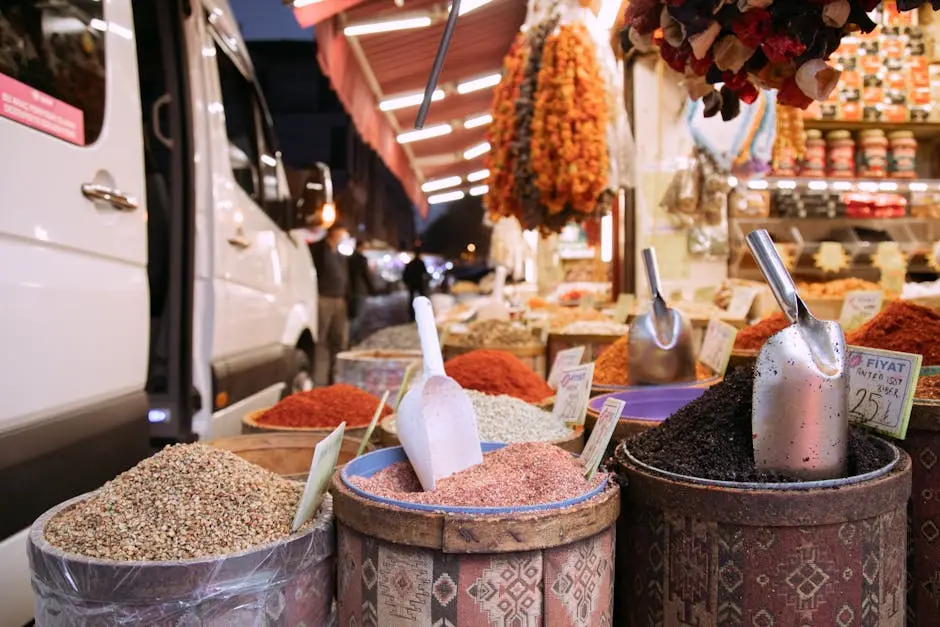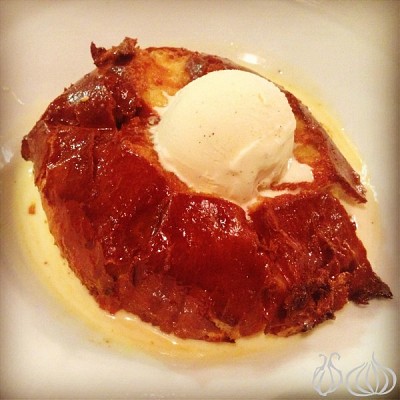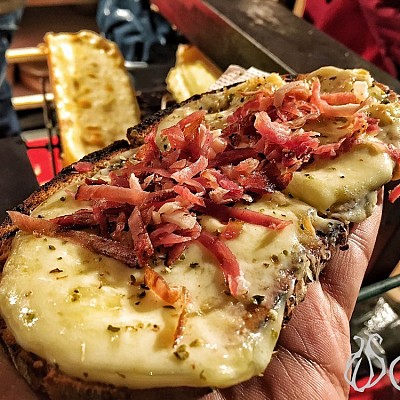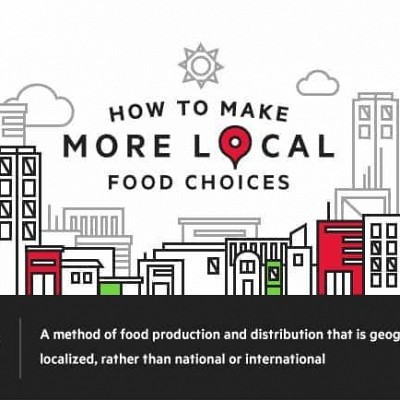Travel is not just about seeing new places; it's also about experiencing new flavors. Every country has its own culinary traditions, and as we explore the world, we inevitably encounter dishes that inspire and reflect the culture around them. In this blog post, we'll delve into how travel ignites creativity in the kitchen, leading to unique signature dishes that capture the essence of our adventures.
The Connection Between Travel and Food
Food is not merely sustenance; it is a vibrant expression of culture and identity. When we travel, we open ourselves to a world of flavors that can influence our culinary choices at home. The sights, smells, and tastes we encounter create a tapestry of experiences that intertwine with our memories. For instance, a simple bowl of ramen in Tokyo can evoke feelings of warmth and comfort, igniting a passion for recreating that experience in our own kitchens.
One cannot underestimate the power of a shared meal during travel. Whether it’s at a family-run trattoria in Italy or a bustling hawker center in Singapore, gathering around a table with strangers or loved ones fosters connection. These moments often inspire us to incorporate new ingredients or cooking techniques, enriching our signature dishes with an international flair. This transformation is not just physical; it is an emotional connection that lingers long after we have returned home.
Moreover, the local food markets we visit during our trips offer a glimpse into indigenous ingredients and cooking methods. From fresh spices in an Indian bazaar to heirloom tomatoes in a Mediterranean village, each unique setting encourages us to think creatively. When we embrace these experiences, we bring new life to our traditional recipes, reinventing them with a touch of our personal travels.
Exploring Regional Ingredients: A Culinary Adventure
Embarking on a culinary adventure starts with understanding the regional ingredients that define a place. Each destination boasts its own selection of fruits, vegetables, and spices that tell a story about the land and its people. For example, exploring the lush markets of Thailand reveals a vibrant array of herbs like lemongrass and kaffir lime leaves. These flavors are foundational to Thai cuisine and inspire us to infuse our own cooking with exotic elements.
As we travel, we often discover how locals utilize these ingredients in their signature dishes. From the rich umami of miso in Japanese cooking to the bold, smoky flavors of chipotle in Mexico, each culture employs its ingredients in fascinating ways. By learning about these uses, we can adapt similar techniques back home, transforming everyday meals into extraordinary culinary experiences.
This exploration isn't just limited to foreign lands. Often, local farmers' markets serve as treasure troves for discovering fresh, seasonal ingredients right in our neighborhoods. As we interact with farmers and vendors, we gain insights into their cultivation methods and unique varieties. Perhaps we find heirloom cucumbers that could elevate a simple salad or fresh-baked bread that inspires a new twist on traditional sandwiches.
Cultural Traditions That Shape Signature Dishes
Every dish carries with it a cultural narrative. Understanding these stories allows us to appreciate the nuances in flavor and presentation. For instance, the importance of food during celebrations shines in dishes like Italian lasagna served at family gatherings or the traditional lamb tagine presented during Moroccan feasts. These cultural contexts provide a deeper connection to the food, inspiring us to recreate the essence of these meals in our cooking.
As travelers, we witness how these traditional practices impact our food experience when we participate in local cooking classes or festivals. Learning to roll sushi in Japan or mix masa for tortillas in Mexico directly connects us to the people and their history. These hands-on experiences elevate our cooking skills while motivating us to embrace these techniques in our homes, leading us to make our signature dishes more reflective of our travel experiences.
By respecting and integrating these cultural traditions, we highlight the importance of authenticity in our cooking. This doesn't mean we need to strictly adhere to recipes; rather, we find ways to honor these traditions while adding our unique touch, resulting in signature dishes that celebrate both our heritage and the influences we've gathered from abroad.
The Influence of Street Food on Home Cooking
Street food is the epitome of culinary exploration, offering tantalizing flavors and creative combinations at every corner. From spicy tacos in Mexico City to fragrant banh mi in Hanoi, these quick bites encapsulate the soul of a city. Experiencing the hustle and bustle of street vendors not only satisfies our taste buds but also inspires us to play with bold flavors and unexpected pairings in our own kitchens.
When we replicate street food at home, we fuse those lively experiences with our everyday rituals. Imagine whipping up a batch of tangy kimchi while reminiscing about the vibrant markets of Seoul. This process becomes a way to revitalize our cooking, encouraging us to seek out similar combinations that can lead to delightful surprises on our dinner table.
Furthermore, creating our versions of street food enables us to recreate the sense of adventure from our travels. It invites family and friends to embark on a culinary journey together, bringing a world of flavors to our gatherings. Whether it’s hosting a summer BBQ featuring international skewers or organizing an evening of homemade dumplings inspired by a night out in the city, these moments cultivate joy, connection, and a greater appreciation for diverse culinary traditions.
Fusion Cuisine: Blending Flavors from Different Cultures
In an increasingly interconnected world, fusion cuisine has emerged as a captivating culinary trend. This approach to cooking lets us break down cultural barriers and experiment with blending techniques and flavors from diverse culinary traditions. Imagine a taco filled with Korean BBQ, or a pizza topped with traditional Indian curry—these creations not only tantalize the taste buds but also create a celebration of cultural intersection.
While fusion cuisine may sometimes face criticism for diluting traditional fare, it undeniably reflects the growing embrace of diversity in our culinary practices. By experimenting with different food cultures, we expand our culinary worldview, discovering the magic that happens when flavors collide. This journey can inspire us to take risks in the kitchen, moving away from familiar comforts to create something refreshingly unique.
Motivated by our travels, we can elevate our cooking by incorporating global flavors into everyday dishes. A simple stir-fry might be invigorated with Thai basil, or we could bring warmth to a winter stew with spices reminiscent of our adventures in Morocco. This form of cooking is about personal expression—crafting signature dishes that tell our stories and reflect our identity through the palette of our experiences.
How Travel Memories Create Lasting Flavors
Travel memories often leave an indelible mark on our palates. The smell of freshly baked pastries at a French café or the fiery heat of street food in Bangkok can evoke nostalgia even years later. These sensory experiences become part of our identity, influencing how we approach food in our households. When we prepare meals that remind us of these moments, we are not just feeding our bodies; we are also nourishing our souls.
The act of cooking is transformed into a meditative experience when infused with these vivid memories. We may find ourselves experimenting with flavors that remind us of our adventures—creating a spice blend inspired by an Indian market or a dessert that takes us back to summer in the Mediterranean. These recollections allow us to create not just meals but emotional connections that linger long after the plates are cleared.
As we share these flavors with friends and family, we invite them into our culinary journey. A simple dish can become a storytelling moment, where we share the tales of how we stumbled upon a recipe while wandering through a market or a tasting menu that delighted our senses. By embracing the flavors of our travels, we cultivate a culture of appreciation and connection, reminding us that even food can bridge distances and create lasting bonds.
Embracing Culinary Inspiration from Around the World
Whether it's a dish that reminds you of a bustling market in Barcelona or a recipe inspired by the spices of Marrakech, travel enriches our culinary repertoire. Embracing these experiences allows us to celebrate cultural diversity and creativity in cooking. So the next time you travel, be sure to savor the local cuisine and think about how it may inspire your own signature dishes.







































